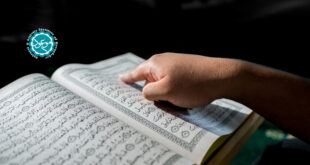Examples of Non-Imami traditionist opinions
It is not necessary here to speak at length about the hadith, which are from our non-Imami brothers, as it is possible for the reader to find them comprehensively collected in the following sources:
1. Muhammad ibn Isma‘il, Abu ‘Abdillah al-Bukhari (194/810–256/870): Khalq af‘ali ‘l-‘ibad;
2. Ahmad ibn Muhammad ibn Hanbal, Abu ‘Abdillah ash- Shaybani (164/780–241/855), the imam of the Hanbalis: ar- Radd ‘ala ‘l-Jahmiyyah wa ‘z-Zanadiqah;
3. Abu ‘Abdi ‘r-Rahman, ‘Abdullah ibn Ahmad ibn Hanbal, (213/828–288/901): as-Sunnah;
4. ‘Uthman ibn Sa‘id, Abu Sa‘id ad-Darimi (c 199/815–280/894): ar-Radd ‘ala ‘l-Jahmiyyah and ar-Radd ‘ala Bishr al- Marrisi;
5. Abu Bakr Muhammad ibn Ishaq ibn Khuzaymah as-Salami an-Naysaburi (223/838–311/924): at-Tawhid wa ithbat sifati ‘r- rabb;
6. Abu Bakr Muhammad ibn al-Husayn ibn ‘Abdillah al-Ajuri, ash-Shafi‘i, al-Baghdadi (c 280/893–360/970): ash-Shari‘ah.
And with reference to the interpretation of the Ash‘aris, see:
1. Abu Bakr Muhammad ibn al-Hasan ibn Furak al-Isbahani, al-Ash‘ari, ash-Shafi‘i (d. 406/1015): Mushkilu ‘l-hadith;
2. Ahmad (Hamad) ibn Muhammad ibn Ibrahim, Abu Sulay- man al-Khattabi, al-Busti, al-Ash‘ari, ash-Shafi‘i (319/931–388/998): al-Bayhaqi has quoted, below, many of his works;
3. Ahmad ibn al-Husayn ibn ‘Ali, Abu Bakr al-Bayhaqi, al- Ash‘ari, ash-Shafi‘i (384/994–458/1066): al-Asma’ wa ‘s-sifat and al-I‘tiqad;
4. ‘Ali ibn al-Hasan ibn Hibatillah, Abu ‘l-Qasim ibn ‘Asakir ad-Dimashqi, al-Ash‘ari, ash-Shafi‘i (499/1105–571/1176): Tabyin kidhbi ‘l-muftari fi-ma nasaba ila Abi ‘l-Hasan al-Ash‘ari.
All these sources are in print; al-Khattabi’s opinions are contained in al-Bayhaqi. I shall only give examples of the opinions of the Traditionists and ignore those who were imams of a madhhab, such as the Hanbali Imam Ahmad ibn Hanbal, whose views and beliefs form the foundation for the doctrines of Ibn Taymiyyah, Taqiyyu ‘d-Din, Ahmad ibn ‘Abdi ‘l-Halim al-Harrani, al-Hanbali (661/1263–728/1328), and Muhammad ibn ‘Abdi ‘l-Wahhab an-Najdi al-Hanbali (1115/1703–1206/1792), the heralds and leaders of the Salafiyyah, as they call themselves, or ‘the Wahhabiyyah’, as others refer to them.
I shall also steer clear of the imams of other madhhabs, lest someone should associate me with people with whom I do not wish to be associated. Those who wish to study the views of the Hanbali and other schools can find them in the afore-mentioned sources; in connection with the defence of Ahmad ibn Hanbal, see the two following sources:
l. ‘Abdu ‘r-Rahman ibn ‘Ali ibn Muhammad, Abu ‘l-Faraj ibn al-Jawzi al-Baghdadi, al-Hanbali (508/1114–597/1201): Daf shubahi’t-tashbih bi-akuffi’t-tanzih;
2. Abu Bakr Muhammad ibn ‘Abdi ‘l-Mu’min, Taqiyyu ‘d-Din al-Hisni, ad-Dimashqi, al-Ash‘ari, ash-Shafi‘i (752/1351–829/1426): Daf‘ shubah man shabbaha wa tamarrada wa nasaba dhalika ila ‘l-Imam Ahmad.
* * * * *
Abu ‘l-Faraj ibn al-Jawzi stated:
Know that all the Traditionists made the ostensive meaning of everything that had to do with the attributes of the Creator conform to the senses, and thus they were anthropomorphist, because they did not mix with the fuqaha’, so as to learn how to make the ambiguous conform with the unambiguous.3
He also said:
Know that people are at three levels concerning reports of [His] attributes:
First, at a level at which they are taken literally, with no explanation or interpretation, unless necessity demands it – as in the case of His words:
and thy Lord comes [al-Fajr, 89:22],
i.e., His decree came – viz. the Salafiyyah; secondly, at the level of interpretation, which is a perilous position; and thirdly, at a level which is called conformity with the senses, which is common among ignorant ‘reporters’ [by this he means the Traditionists], since they possess no part of the intellectual sciences, which let it be known what is possible and what is impossible for Allah, for intellectual science turns the ostensive meanings of what is reported away from anthropomorphism.Since they were deprived of this, they were at liberty in Traditions to make them conform to the senses.4
In refutation of those who held that most of the Hanbalis were corporealists and anthropomorphists, Ibn Taymiyyah said:
The corporealists and anthropomorphists were more prevalent in groups other than [that of] the followers of the Imam Ahmad; these include certain groups of Kurds, all of whom are Shafi‘i, and among them is found more corporealism and anthropomorphism than in any other group, and the people of Gilan, among whom are Shafi‘is and Hanbalis. As for the pure Hanbalis, there was not as much of it among them as among others; the Karamiyyah were all Hanafis.5
I do not agree with Ibn Taymiyyah in his defense of the members of his school, but I shall remain silent about it – an apology to our brothers the Kurds whom Ibn Taymiyyah spoke Ihya’ at-Turathi ‘l-‘Arabi, Beirut, offprint 2, 1392/1972, vol.1, p.418. Of as he did, for they know him as well as I do. As for the people of Gilan, they stopped being Shafi‘i and Hanbali centuries ago, and today they are all Imami Shi‘i.
The position of Non-Imami traditionists on anthropomorphism
As examples of what Ibnu ‘l-Jawzi pointed out in his discus- sion of the Traditionists, I shall choose three who are not clear- cut Hanbalis, and I shall provide a short biography of each of them, so that I will not be accused of having stumbled upon two obscure and undistinguished men who were of little significance among Traditionists:
1. Ishaq ibn Ibrahim ibn Makhlad ibn Ibrahim, Abu Ya‘qub al-Hanzali al-Marwazi, Ibn Rahwayh an-Naysaburi (161/778–238/853). al-Katib said: “He was one of the leaders of the Muslims,a landmark in religion; he combined knowledge of hadith and fiqh, his memeory was excellent and reliable, and he was pious and an ascetic. He travelled to Iraq, the Hijaz, Yemen, and Sham . . . He came to Baghdad and became familiar with the memorizers of hadith there, and exchanged narrations with them. He returned to Khurasan and settled in Naysabur.”
al-Mazzi and as-Subki said of him: “He was the teacher of al-Bukhari, Muslim, at-Tirmidhi, Abu Dawud, and an-Nasa’i, . .. Ahmad ibn Hanbal, . . . and Yahya ibn Mu‘in . . .”Nu‘aym ibn Hammad said: “If you see an ‘Iraqi casting aspersions on Ahmad ibn Hanbal, have your doubts about his beliefs; and if you see a Khurasani casting aspersions on Ishaq ibn Rahwayh, have your doubts about his beliefs.” And an- Nasa’i said: “He was a leader, trustworthy, reliable.” Ahmad ibn Hanbal said: “If Abu Ya‘qub [Ibn Rahwayh], the commander of the traditionists, narrates something to you, hold on to it.”
Abu Hatim said: “He was a leader of the Muslims.” Ibn Hibban said: “Ishaq was a leader of his time in fiqh and reli-gious sciences, a memorizer [of hadith], someone who held opinions [in these sciences], someone who wrote books, made deductions from Prophetic Traditions and defended them, and suppressed those who opposed them. His grave is well known and is visited.” Abu ‘Abdillah al-Hakim said: “He was the leader of his time in memorizing hadith and giving fatwas.”
Abu Nu‘aym al-Isbahani said: “Ishaq [ibn Rahwayh] was an associate of Ahmad [ibn Hanbal]; he elevated [the status of] hadith and reduced deviators to nothing.” adh-Dhahabi said: “The great leader, the shaykh of the East, the master of the memorizers [of hadith]. On account of his memory he was the leading commentator [on the Qur’an], one of the heads of fiqh, and a leader in ijtihad.”6
Tags Imamiyyah
Check Also
15 European Countries With Most Muslims
According to Mouood, quoting by World Atlas: 15 European Countries With Most Muslims By 2050, Muslims …
 Mouood Mouood English Edition
Mouood Mouood English Edition



